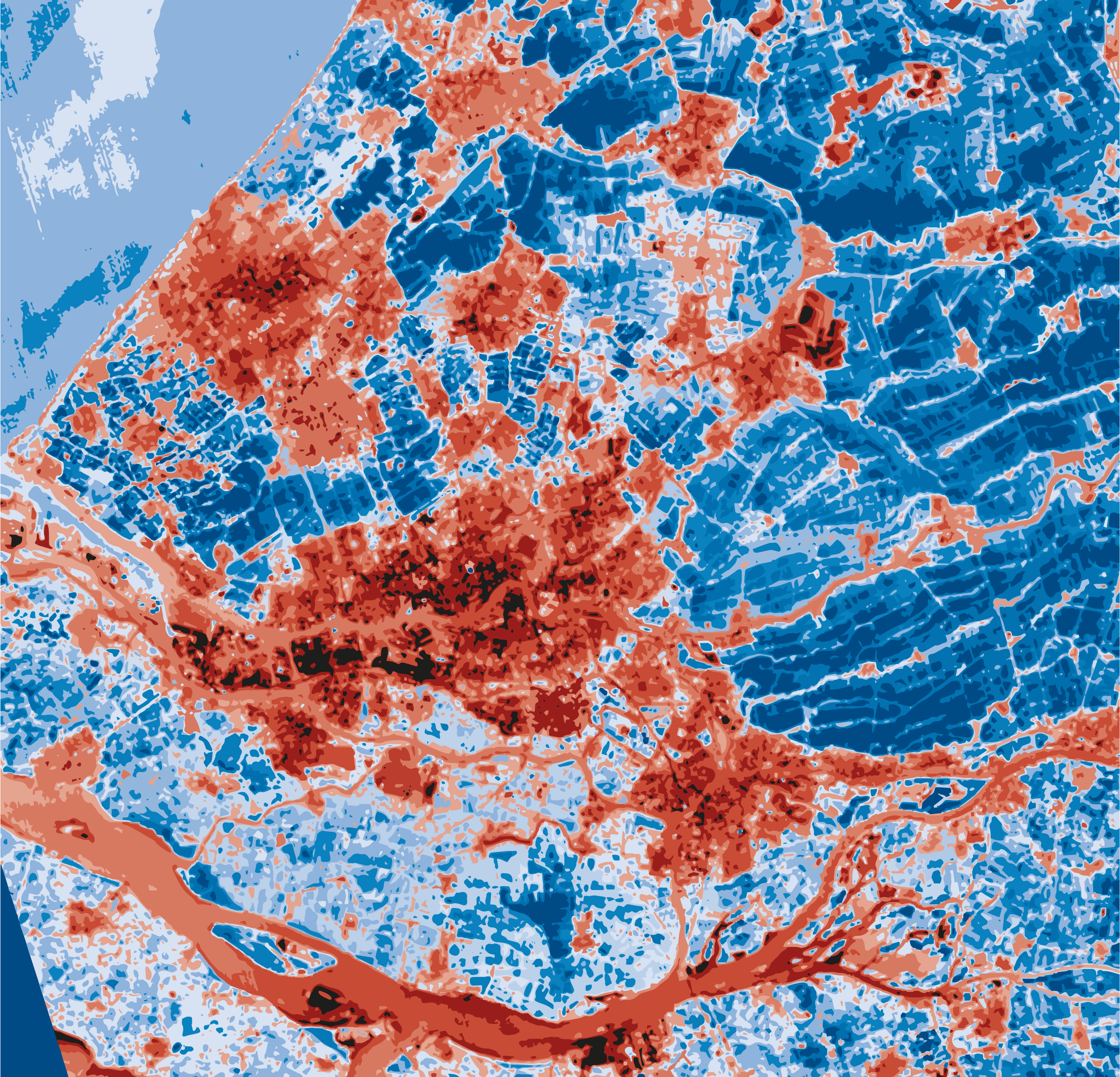The Hague heat
Mapping The Hague’s urban heat island
In recent years, various studies have been carried out into the heat island effect in the Netherlands. A study by TNO set the tone for the city of The Hague. The Hague would have the strongest heat island effect of any Dutch city. This perception has given rise to a social and political concern that formed the starting point for this research project by TU Delft into the urban heat island effect in The Hague, made possible by the municipality of The Hague.
With remote sensing methods, we determined the heat island (surface temperature) and the surface energy balance. With crowd sensing, the temperature in the immediate vicinity of more than 200 homes was monitored (gardens and balconies). Indoor temperature measurements of over 12.000 homes were obtained as well, provided by Quby. We mapped social and spatial factors based on satellite images, GIS and 3D models. Using that data as a starting point, the relationships between heat island/surface energy balance on the one hand and social/spatial factors on the other hand were determined. Multivariate regression analysis was used to determine the social and spatial characteristics that influence the development of the heat island and the increased mortality among the elderly during heat waves. The research ultimately resulted in two heat maps, an atlas with underlying data, and a set of adaptation measures for the built environment that make the city of The Hague and its inhabitants more resilient to the effects of heat. Overview maps show where which measures apply. A simple timeline underlines that the heat of The Hague requires a long-term policy.
On the basis of detailed and recent satellite images, we concluded that The Hague’s heat island effect is considerable, but not more serious than in the rest of the metropolitan region. During the day, the surface area of the heat island in The Hague is less fragmented than that of Rotterdam, but not more so. The nocturnal heat island surface is under the influence of the North Sea. In spring the sea is cooler at night than the city’s surface, in autumn the proportions are reversed. The crowd sensing measurements show that the temperature in the immediate vicinity of homes can easily exceed 30 degrees Celsius in summer.
There is a strong correlation between the heatisland effect (QH + QS) and the use of space in The Hague. The degree of hardening, the lack of reflection of sunlight (albedo), the absence of green and surface water, shadow and sky-view, building volume and the distance to the sea are factors that together determine the heat island in the summer. The heat-island effect in a winter situation has not been considered.
In view of the unrest surrounding the current heat island effect, KNMI’s climate forecasts, the considerable densification challenge facing the city, the expected ageing population and the above-average mortality during heat waves, there is indeed sufficient reason to tackle the problem in a policy-based manner. The study has identified especially three actions aimed at curbing the heat-island effect:
- Phasing out bitumen roofs;
- Greening of courtyards;
- Monitoring home overheating.
These actions require a long policy breath that extends over decades. The heat maps can be used to set priority areas. The Heat Map ‘Ruimte’ shows the clusters of spatial characteristics that strengthen the urban heat island: hardscape; vegetation; albedo; sky view; surface water; building volume.
The heat map health shows in a similar way the factors associated with the excessive mortality that occurred during heat waves: number of people over 75 per hectare; age of the buildings; sensible and ground heat flux.
Facts
| Funder: | City of The Hague |
| Programme: | TU Delft Climate Institute |
| Overall budget: | € 57.500 |
| Grant amount: | € 57.500 |
| Role TU Delft: | Principle investigator |
| Project duration: | July 2015 - December 2019 |
| TU Delft researchers: | Dr.ir. Frank van der Hoeven Ir. Alexander Wandl Ir. Noortje Vaissier Ir. Matthijs de Deckere |
Project partners
TU Delft, Municipality of The Hague, Quby
